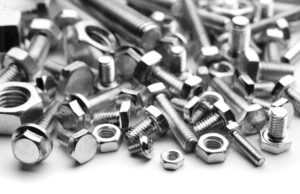 Screws have been depended upon by society since their invention around 200 B.C. Due to advances in technology, we are now able to make custom screws and fastener options of all size and shape: micro fasteners are available for small, delicate projects, while custom shoulder bolts provide mobility. Whatever your needs, there is a fastener out there to meet them.
Screws have been depended upon by society since their invention around 200 B.C. Due to advances in technology, we are now able to make custom screws and fastener options of all size and shape: micro fasteners are available for small, delicate projects, while custom shoulder bolts provide mobility. Whatever your needs, there is a fastener out there to meet them.
When it comes to the intricacies and specialized needs of aerospace projects, however, you need to turn to a different material. Ceramic fasteners are lightweight, resistant to wear and corrosion, and operate in flexible temperature range — in short, they’re ideal for extreme environments, including those inside and outside of the Earth’s atmosphere.
Shoot For The Stars
Ceramic screws and bolts don’t really seem like they would be favored in the aerospace, medical, and green energy markets of today. Most of us are familiar with the material due to its use in pottery and decorative artwork. However, the type of ceramic used in your mother’s porcelain is not what scientists and engineers are incorporating into their aerospace designs.
By creating certain types of ceramic materials — like YTZP zirconia, or Yttria-stabilized tetragonal zirconia polycrystal — they can effectively develop a substance that possesses the toughness of metal but is not an electrical conductor. Since fires in space and on airplanes are generally bad, this makes ceramic screws and custom shoulder bolts invaluable assets as non-conductive screws.
The Drawbacks
Unfortunately, everything has its flaws. Ceramics stand up well to compression, but are not very ductile. Though they are still quite strong, brittle failure is their biggest risk: if defects are present in the composition, they become stress concentrators and provide a place for a failure crack to form. Additionally, the grinding of ceramic too aggressively can create microcracks which will further weaken the material. The choice between ceramic and plastic fasteners usually comes down to the need to tolerate high temperatures and corrosion.
Cost is also a negative factor as ceramic fasteners are still low-volume, specialty products. The price of processing, rather than the raw material itself, is what causes that number to jump.
Ultimately (and unsurprisingly), need is what determines whether or not you will rely on ceramic over other materials for your project.

 Screws have been depended upon by society since their invention around 200 B.C. Due to advances in technology, we are now able to make custom screws and fastener options of all size and shape: micro fasteners are available for small, delicate projects, while custom shoulder bolts provide mobility. Whatever your needs, there is a fastener out there to meet them.
Screws have been depended upon by society since their invention around 200 B.C. Due to advances in technology, we are now able to make custom screws and fastener options of all size and shape: micro fasteners are available for small, delicate projects, while custom shoulder bolts provide mobility. Whatever your needs, there is a fastener out there to meet them.